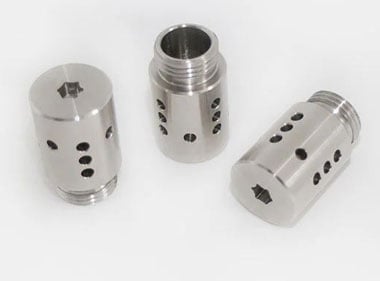Many people who are self-employed or run their own small businesses rely heavily on the manufacturing sector for their livelihood. The relentless march of technological progress inevitably results in the development of novel approaches to manufacturing. When considering whether or not to outsource the manufacturing process to machining services, it is important to consider all of the available options. Printing in three dimensions (3D) is one of these more recent methods. Over the past few years, there has been a rise in the number of factories that use it. This is partly the case due to the fact that additive manufacturing, which is synonymous with 3D printing, has a wide range of applications in the business world. The following are some illustrations:
Applications for 3D printing should be designed.
When developing new products, engineers are required to take into account the constraints imposed by the manufacturing process. With today's 3D printing technology, it is possible to create components that were previously thought to be impossible to produce using more conventional manufacturing methods. This opens up a whole new world in the design phase, which can result in superior products and components that make better use of their resources. The majority of these 3D-printed jobs are adding value to significant products, while others are completely out of the ordinary. This is feasible due to the fact that additive manufacturing essentially provides a freeform design. This translates to the fact that even the most peculiar shapes are capable of being designed and then manufactured with the assistance of a 3D printer.
Prototyping done quickly and effectively using 3D printing technology
Prototyping, which can be done quickly and effectively with 3D printers, is one of the oldest business applications for these printers. Since the printer was invented in 1983, the company has used services for 3D printing to create a viable model of the desired end product. This model is used to test the concept or to show off in front of future potential investors. In the past, additive manufacturing was also frequently referred to under the name rapid prototyping. Despite the fact that this is no longer really the case, using 3D printing can still be a great way to quickly produce a model that can perform its intended function. After the prototype has been created, it is, of course, essential to test it and make adjustments to metal surface finishing.

a production with a low volume
Although they can be slow at times, 3D printers are excellent for meeting the requirements of production in small batches. As is the case with prototyping, if an entrepreneur is ready to introduce a new product but is unsure of the level of demand for it, they can print a limited number of units in order to gauge the situation. For instance, low-volume production is typical in the medical equipment industry because manufacturers frequently create, test, and redesign their products in an effort to improve their performance. Additive manufacturing is best suited for low-volume production; however, thanks to recent technological advancements, 3D printing is now a viable option for high-volume production as well. Nevertheless, the use of 3D printers for the mass customization of products is something that should be taken into consideration by smaller businesses.
the application of biology and medicine in the treatment of humans
The ability to print biomedical devices that are intended specifically for human use is a feature of three-dimensional printing that is particularly intriguing. For instance, some businesses are working on the creation of 3D-printed prostheses that can be personalized for amputees. These prostheses are intended to make the user feel more at ease, and the user can also personalize the appearance of the prostheses to reflect their preferences in this regard. These biomedical components can be printed using 3D printing technology, making them a better fit for the user's specific characteristics than the off-the-shelf parts. It is quite possible that in the not-too-distant future, 3D printing will make it possible to create printable organs. This is a development that will occur very soon.




